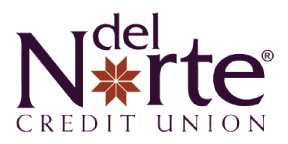Los Alamos High Students Working on Financial Literacy in Elective Class
Tonya Collins said some of her children have made poor choices with their money. She didn’t want her teen daughter, Dori Archuleta, to fall into the same habits.

Originally posted on santafenewmexican.com
So she urged Dori to sign up for Ray Henderson’s financial literacy class at Los Alamos High School. “I think it’s important for teenagers to learn how to manage their money,” Collins said. “I push them all to learn how to budget. I’m a single mom, and we are always on budget.”
Dori gets that. “I’m not good with my money,” she said during a recent interview in Henderson’s classroom. “I didn’t even know how a debit card or a credit card works.”
Now she can talk stock markets, monthly budgeting, balancing a checkbook (one of the class’s first lessons was how to write a check) and how to set aside money for college. She and the others have also learned about co-signing financial papers, undergoing a credit check and paying out a security deposit for an apartment.
It’s important work to learn. A 2016 Council for Economic Education report said that in 2012, nearly 30,000 teenagers from 18 countries took part in an international assessment of young people’s financial literacy. More than 1 in 6 students in the U.S. failed to reach even the baseline level of proficiency in financial literacy. Worldwide, American students ranked about midway in the report — just ahead of Russia and right behind Latvia.
The report said just 17 states require students to take a course in personal finance. Only 20 states require students to take a course in economics — two states fewer than in 2014. New Mexico does require schools to offer such courses, the report says, but the classes are not mandatory. Nor is personal finance required in the New Mexico state standards.
Just a handful of Henderson’s students had ever written a check before taking the class. Fewer than half have held jobs. Not one knew how to budget before enrolling in the elective, which, Henderson said, the school has offered for at least five years.
“Money is what makes the world work,” said Brianne Johnston, a sophomore in the class. “If we as teens don’t know how money works, how are we going to run the world?”
Now the students are ready to budget their half of a rent payment and will be able to talk to potential roommates at college about whether they can pull their weight.
“As you progress out of high school and into college and away from your parents, you are on your own,” Henderson told the kids.
Henderson also oversees the school’s DECA program, which prepares students for careers in marketing, finance, hospitality, management and entrepreneurship. The DECA students operate a small food and refreshment store next to the financial literacy classroom, and the students take turns working the cash register so they can practice cash reconciliation and other retail-oriented skill sets.
Henderson said the class uses the online curriculum Banzai that includes a “life-scenarios” booklet that “provides a seamless connection between my classroom and my students’ actual financial decisions. The booklets include situations like paying for concert tickets, dealing with an overdraft and even just paying for gas.”
Del Norte Credit Union sponsored the use of the booklets, Henderson said.
Henderson’s students are also learning how to choose a career based on its financial worth around the state, the country and the world.
Dori Archuleta said the class has helped her dream about a post-collegiate career, maybe as a yoga instructor, she said. It won’t pay much — around $32,000, based on her research — but it could be exactly what she wants and she can at least figure out how to budget around such a constrained pay scale.
And the class has taught her which careers to avoid, too.
“McDonald’s. Subway. Anything fast food,” she said.